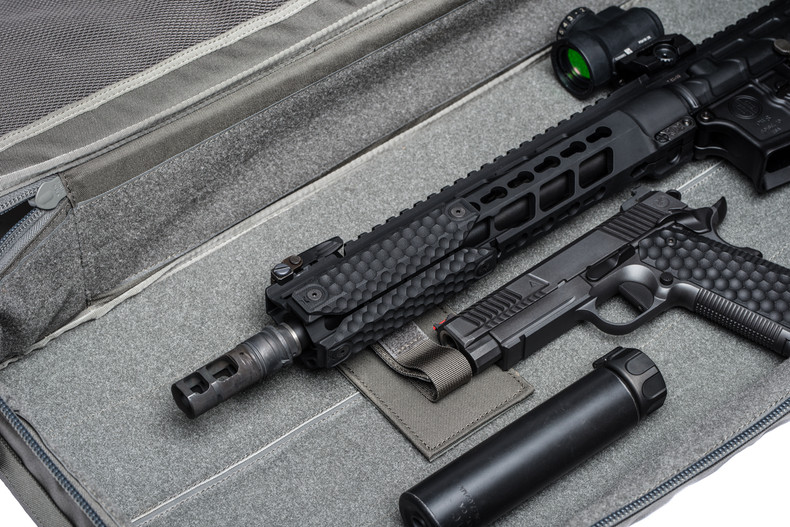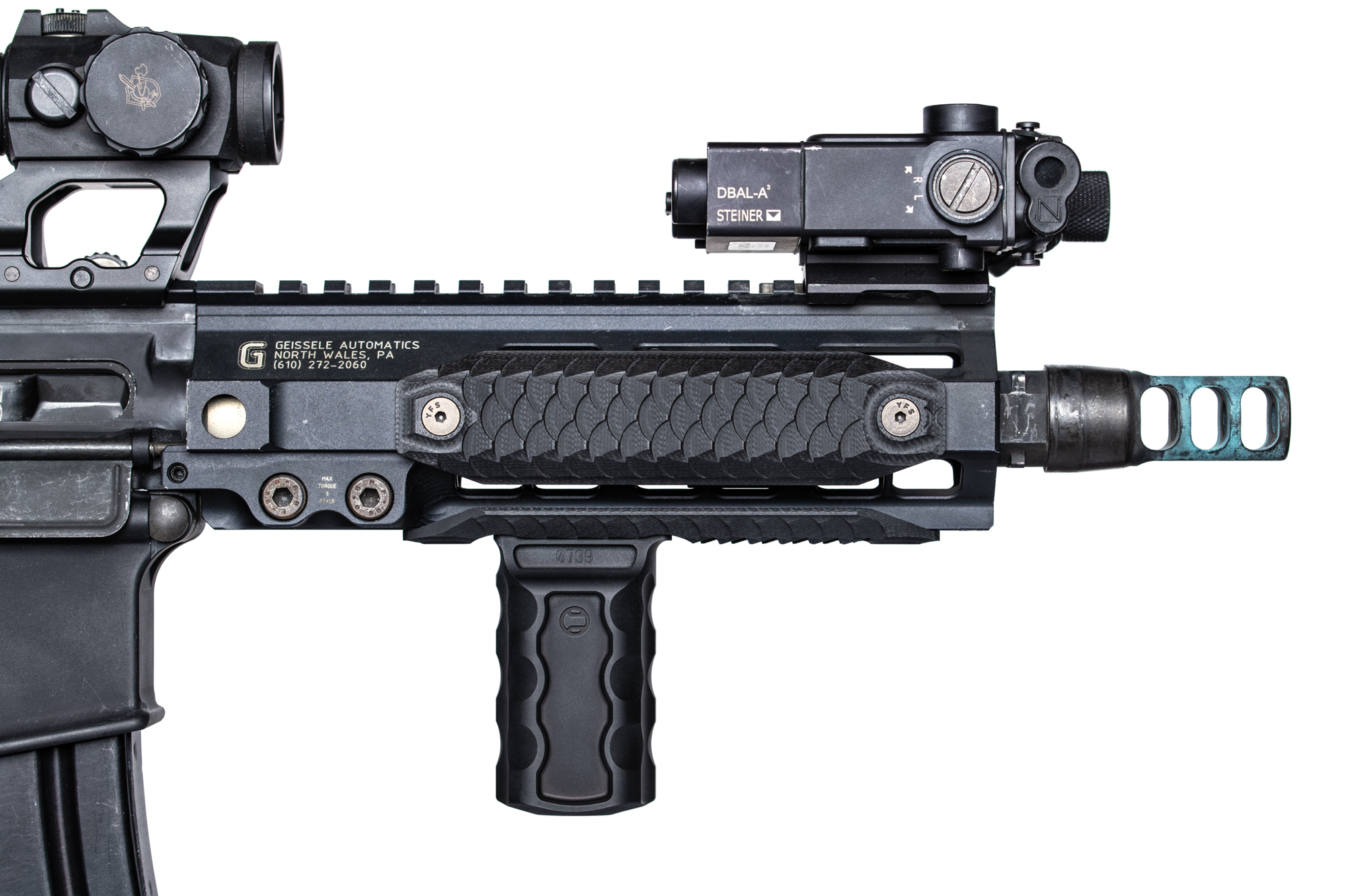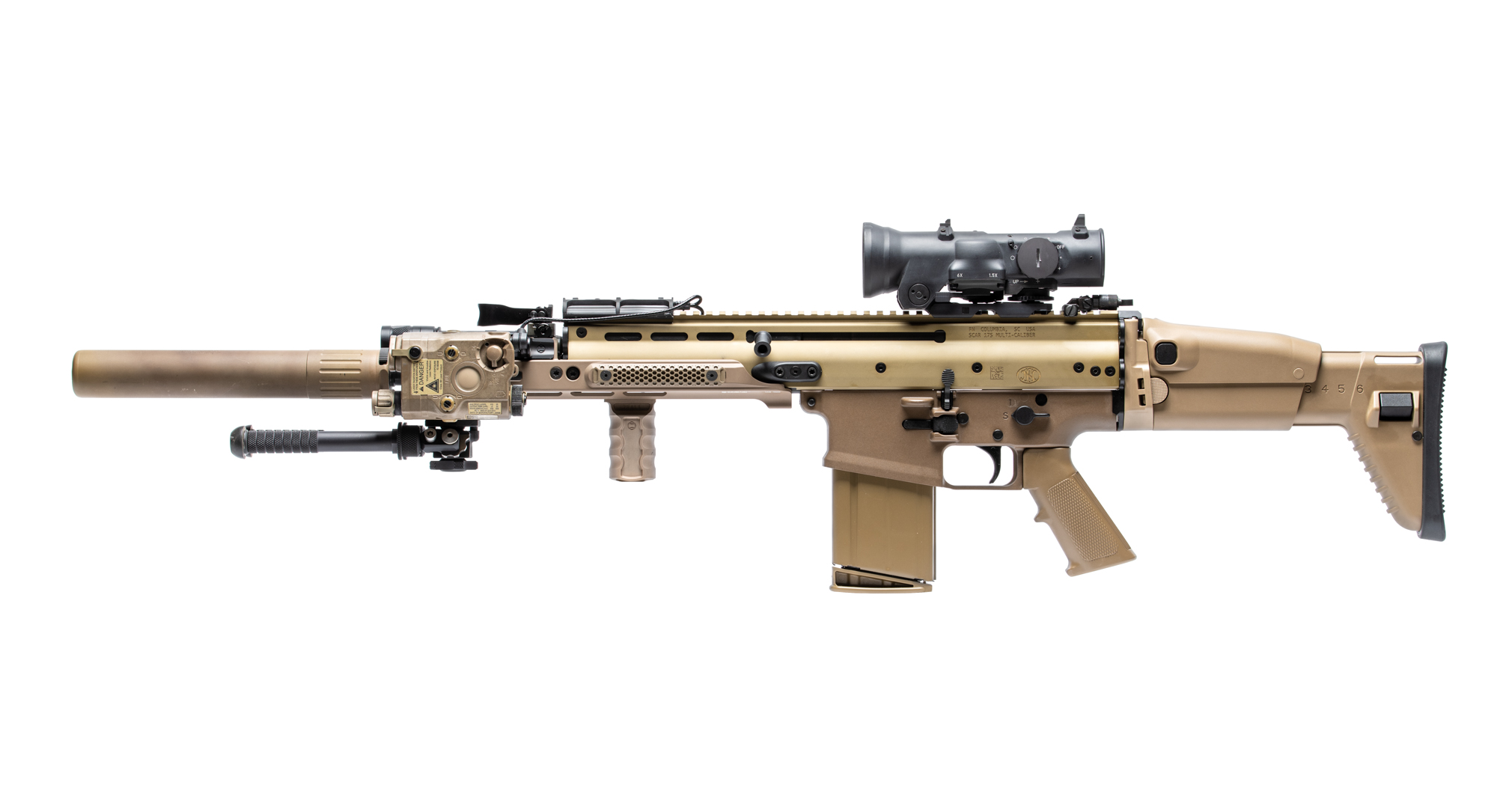It’s an undisputed fact that one of the reasons that the AR-15 is so supremely popular is because of how easy it is to customize them, such as a muzzle brake. As such, there are those who add every modification, widget, grip, cover, accessory, or attachment they can think of to the handguard and receiver of their rifle.
But one thing that seems to only appear on the most high-end and custom rifles are muzzle brakes. You might recognize them from their spot at the end of large cannons and heavy caliber rifles. But do they belong at the end of your AR-15? To answer that question, we have to explore what they are and what they’re used for.
Don’t Recoil From… Recoil
Every firearm has a certain kick to it. This is the recoil of the round exiting the barrel of the gun. The gas that builds up from the bullet exploding out of the cartridge pushes the bullet forward and also pushes your rifle backward. To limit the recoil of your rounds, you can channel that gas in a different direction. For instance, if the gas is pushing up, you should look for additions that will help to minimize the barrel’s lift, or can channel that gas to push your barrel down.
By putting small holes in the barrel, called ports, you can channel this gas, essentially minimizing the amount that the barrel moves after a round passes through it. But drilling holes in your barrel isn’t always wise or practical. That’s where muzzle brakes come into play.
Typically, you’ll find muzzle brakes are about 2 inches in length with channels that force the gas to the sides of the barrel, rather than straight out the front. Muzzle brakes are typically screwed onto the end of the barrel and can be removed as needed. So the theory sounds simple, but are they at all useful in practice?
The Pros of Using a Muzzle Brake
The most obvious advantage of using a muzzle brake on your rifle is that the recoil is significantly reduced. In some cases, muzzle brakes can cut recoil in half. This can make larger calibers more manageable in your AR-15, like platforms chambered in .308 or even the beastly .458 SOCOM. With more manageable recoil, you’ll be able to make follow-up shots more quickly and more precisely. That means your target gets shredded faster. You’ll also feel less strain on your shoulder, as the recoil from the round is being transferred away from you, and not back into you.
The Cons of Using a Muzzle Brake
Lower recoil, faster follow-up shots and saving on your post-range trip ibuprofen all sound like great reasons to buy a muzzle brake and attach it to your AR-15 right away. But before you rush out to your local gun store, take a minute to pause and consider the disadvantages.
First is the price. A high-quality muzzle brake installed by a trained gunsmith can quickly add up to around $250. Those in pursuit of laser-accurate rifles might not flinch at this cost, but for those who are just looking to increase their accuracy during their semi-annual range trip, that price can make them rethink whether or not it’s really worth it. There are other products available on the market that can help manage recoil as well, such as control components for the second hand like a vertical forward grip or handstop. At RailScales, there are many great options available for just such use, and with the addition of the RSBM-P, a polymer version of our popular aluminum stubby forward grip, you can manage recoil without adding to the overall length and weight of the AR-15 at roughly 20% of the cost.
Beyond just the price, muzzle brakes can offend your other senses. Since the gas from the round is now no longer leaving the front of the rifle and instead of being forced out at an angle, your rifle will sound much louder. You’ll need to wear more hearing protection, and you could really bother fellow shooters at the range.
Muzzle breaks also take up a lot of real estate at the end of your rifle. You’ll find that a decent muzzle brake is at least two inches in length. This might not sound like a lot, but if you’ve got a standard 16-inch barrel, adding another two inches means you no longer have a compact weapon. It will also add to the weight of the firearm and could throw off the balance. There are more lightweight and compact alternatives to using a muzzle brake that can have just as much positive impact on recoil reduction at a fraction of the cost.
So, When Should I Use a Muzzle Brake?
Simply put, if you need a muzzle break, you will know. But if you don’t have a sixth sense for something like that, here are some considerations for when you might benefit from a muzzle brake:
- If you’re firing a large caliber rifle
- You need to make fast follow-up shots
- You have a very lightweight rifle
- You’re not concerned about increased muzzle flash
The fact is, many AR owners likely don’t need a muzzle brake for their standard .223/5.56 or even .300 blackout caliber rifles. If you can find one on the cheap and want to play with one, go for it, but you likely won’t experience any noticeable differences in accuracy that couldn't be facilitated by practice and good shooting form and trigger control.
A muzzle brake can be a solid addition to certain AR-15 setups, and while subjective in its effectiveness at reducing recoil, there are valid reasons to add one to your weapon if it gives you confidence shooting more accurately and consistently on follow-up shots. While there are many methods for accommodating recoil, some shooters feel a good AR-15 muzzle brake is the best way to manage it for precision shooting.
Order Your AR Rail Accessories Here
RailScales offers high-end AR-15 accessories for your rail systems, including hand stops and grips, and rail covers. Made from premium materials like billet aluminum, high temp polymer, and G10. Our AR parts are rugged and reliable, ideal for those who demand uncompromising performance from their equipment. Browse our complete collection of parts and accessories, then deck out your handguard with parts today.






